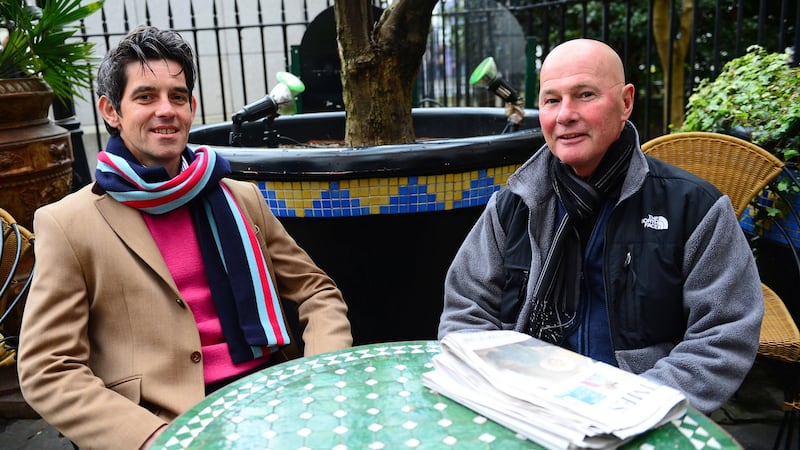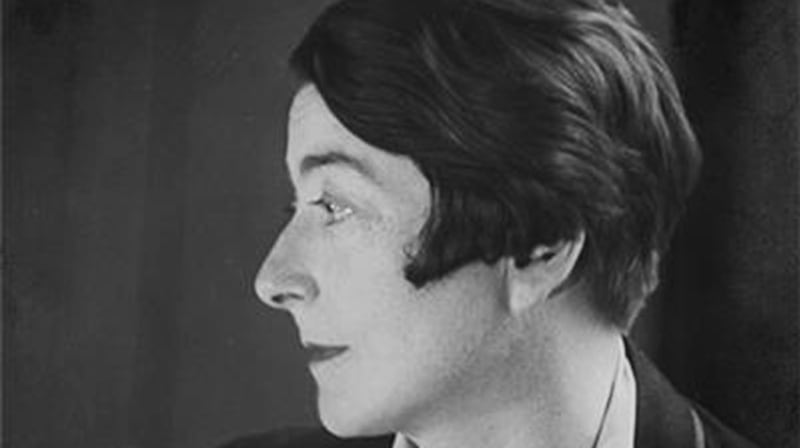With homosexuality illegal until 1993 in Ireland, gender identity was an important factor in the migration of Irish people from the early modern period to more recent times. At Epic, we explore the social and legal factors that made their lives in Ireland untenable, but we also celebrate their successes and the immeasurable contribution they made around the world. To complement a week of Pride events at Epic, here are some LGBTQ+ diaspora members who we want to celebrate this year.
Fr Bernárd J Lynch

Born in Co Clare in the 1950s, Bernárd didn't feel he fit in, calling himself "a pious little creep". He entered the seminary at 17 and had a long-term relationship with another trainee priest, before being ordained in 1971 and undertaking further studies in counselling and psychotherapy. The mid-70s found him in New York, where he would remain through the worst of the Aids crisis, working for the Gay Catholic support group Dignity. Targeted by the Vatican for drawing attention to the truth of the lives of many gay clergymen, Lynch continued to speak and campaign in defence of the rights of the LGBTQ+ community. Lynch has been married to his partner, Billy Desmond, since 1998. He has published books including Priest on Trial and If It Wasn't Love, Sex, Death and God, and was part of the Take the Boat to Vote campaign in 2015 for the Irish Marriage Equality referendum.
In 2017, he married his husband Billy Desmond in Co Clare, and the occasion was honoured by New York City Council. Speaking to Peter Standford of The Independent in 2010 about balancing his marriage with his vocation, he said: "Either being a Catholic Christian is about love, or it is not about anything. I am not choosing Billy over priesthood. My vocation is to love."
Eileen Gray

Born in 1878, to an Anglo-Irish family, Gray split her time between her native Enniscorthy and the family's home in London. She studied art at the Slade School, known for its bohemian approach. A quietly driven artist, architect and designer, Gray initially excelled in a specialised form of Japanese lacquer work, opening a workshop with her mentor Seizo Sugawara in 1910, which produced high-end commissions for wealthy clients. While in a relationship with Romanian architect Jean Badovici, she designed the now famous E-1027 house, the numbers symbolising their names. Although it seems Badovici simply acted as a consultant on her plans, he later claimed credit for the house. The couple split in 1931, and the architect Le Corbusier would later violate her wishes for the house by covering its walls with cubist murals depicting the naked female form. Gray had a relationship with singer and actor Marie-Louise Damien, more frequently known as Damia, until 1938.
In later life, Gray continued to develop architectural plans, but most of them remained unbuilt. She led a quiet life devoted to artistic pursuits in Paris. She lived to see a resurgence of interest in her work and when her screen Le Destin sold in 1972 for a record price. She dismissed the sale price: “C’est absurd”, although she might have been more shocked had she lived to see her Dragons armchair sell for a record €21 million in 2009.
Although she never lived as an adult in Ireland, in later life she said: “I am without roots, but if I have any, they are in Ireland.”
Dusty Springfield

The iconic soul singer was actually born – in London in 1939 – Mary Isobel Bernadette O'Brien, the granddaughter of an editor of the Irish Independent. Sent to a Catholic convent school by her ambitious parents - both thwarted musicians themselves - she began listening to the great American jazz vocalists Peggy Lee and Bessie Smith. When she left school she reimagined herself as Dusty Springfield ("Dusty" being a reference to her childhood tomboy days playing football on the streets) and began to make records. I Only Want to Be with You was a breakthrough hit in 1963, and 1969's Son of a Preacher Man is still ubiquitous in its capturing of the Memphis sound of the sixties. Her personal life was turbulent; forced into a reclusive lifestyle in America to avoid the British tabloids, she had a long-term relationship with singer Norma Tanega in the 1960s and 1970s, and a two-year marriage to American actress Teda Bracci in the early 1980s. In a moment of characteristic directness (and perhaps impatience), she said to Ray Connolly of the Evening Standard in 1970: "Many other people say I'm bent, and I've heard it so many times that I've almost learned to accept it ... I know I'm perfectly as capable of being swayed by a girl as by a boy. More and more people feel that way and I don't see why I shouldn't."
Dusty’s ashes were scattered at the Cliff of Moher by her brother Tom in 1999.
















